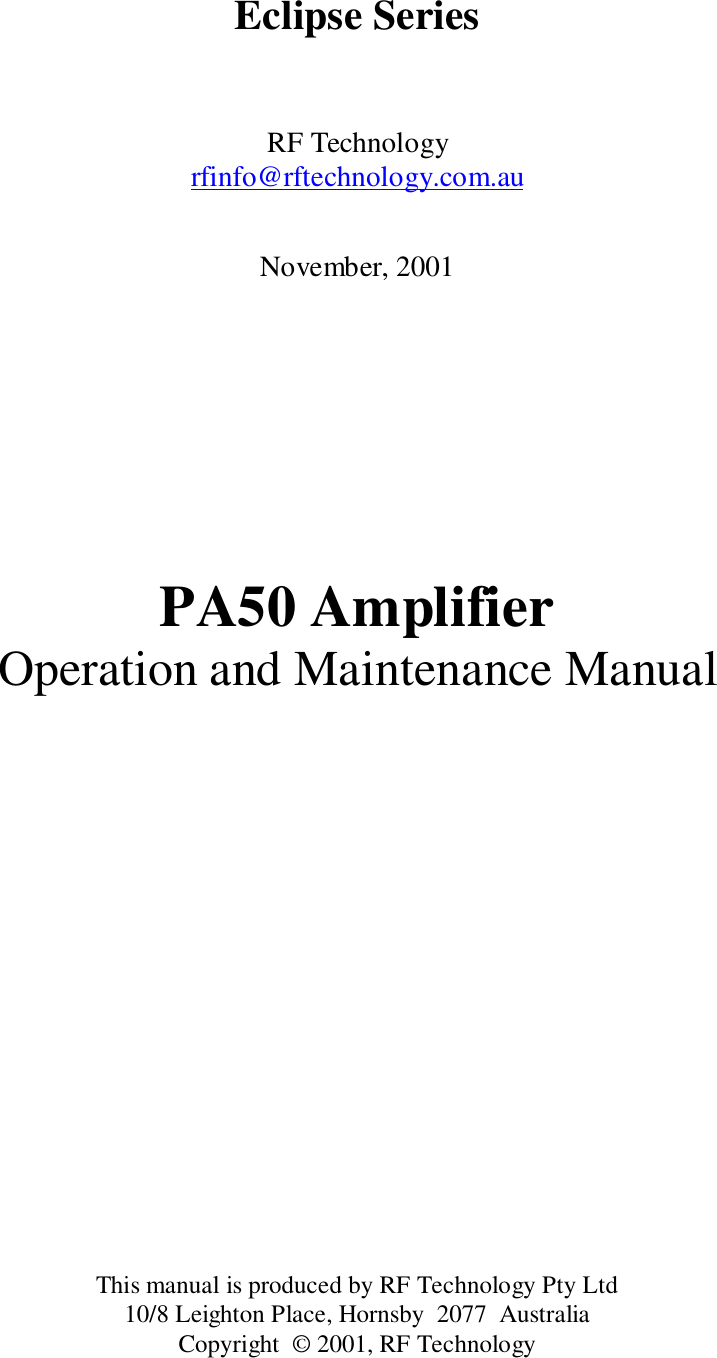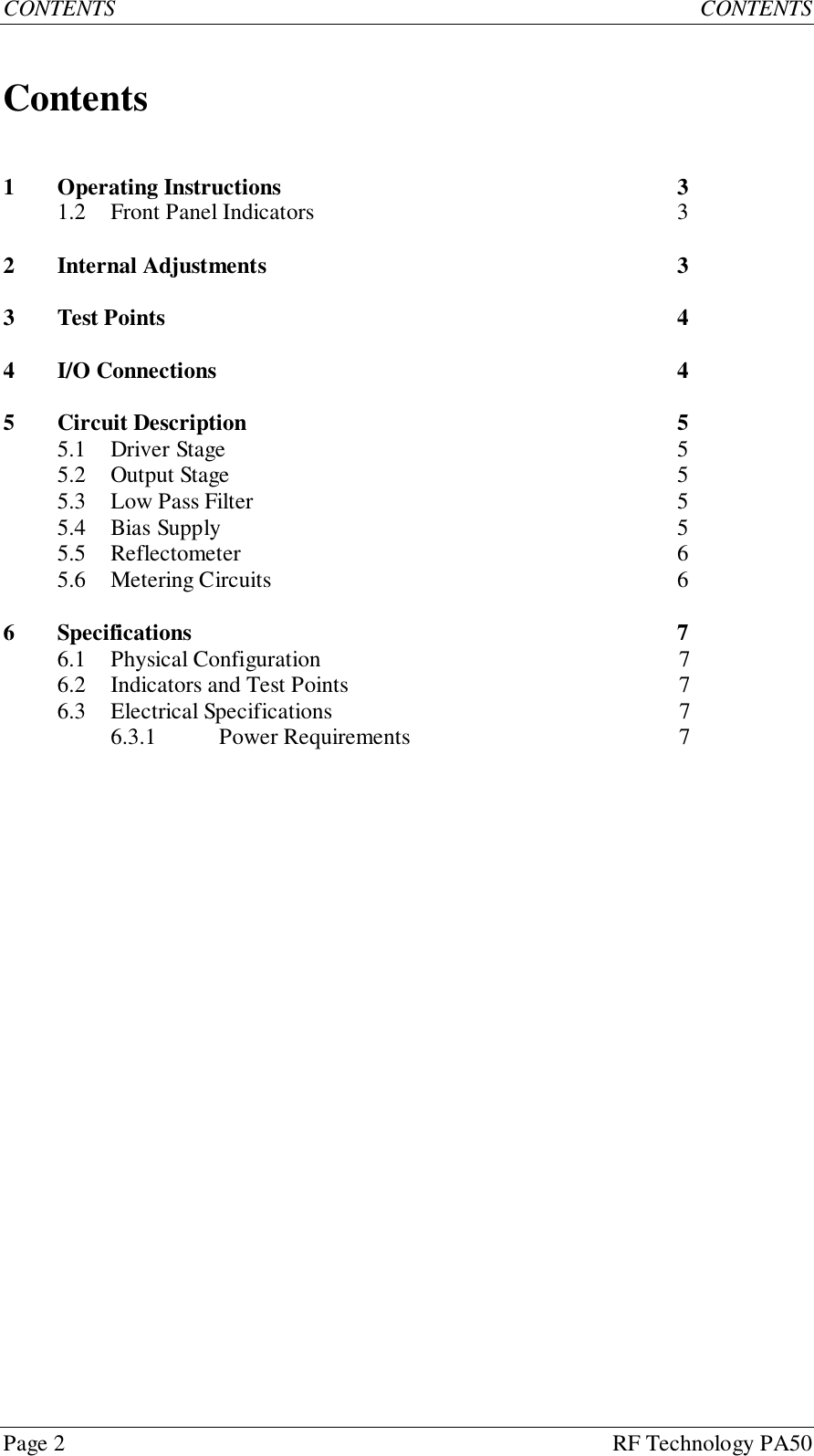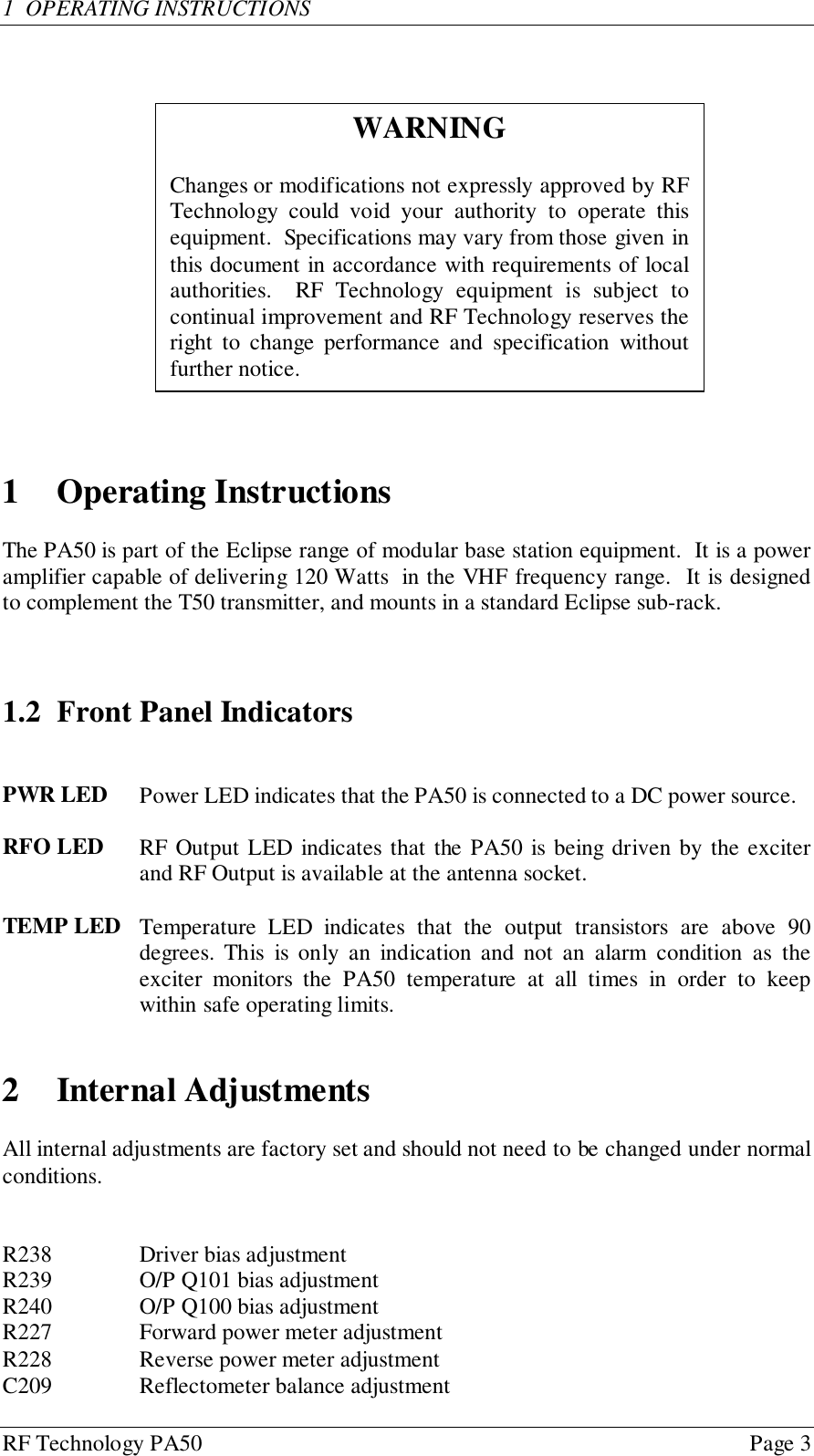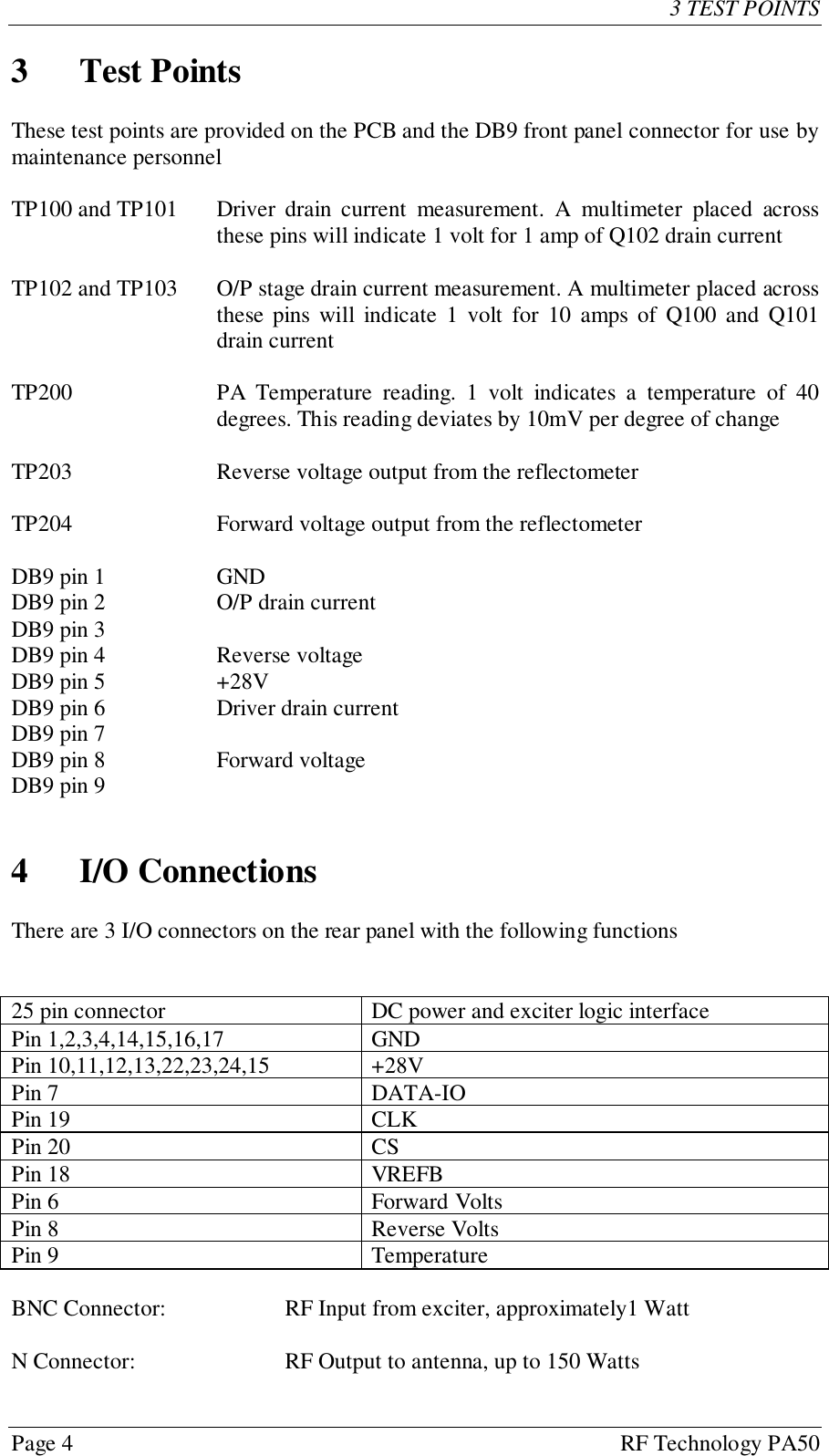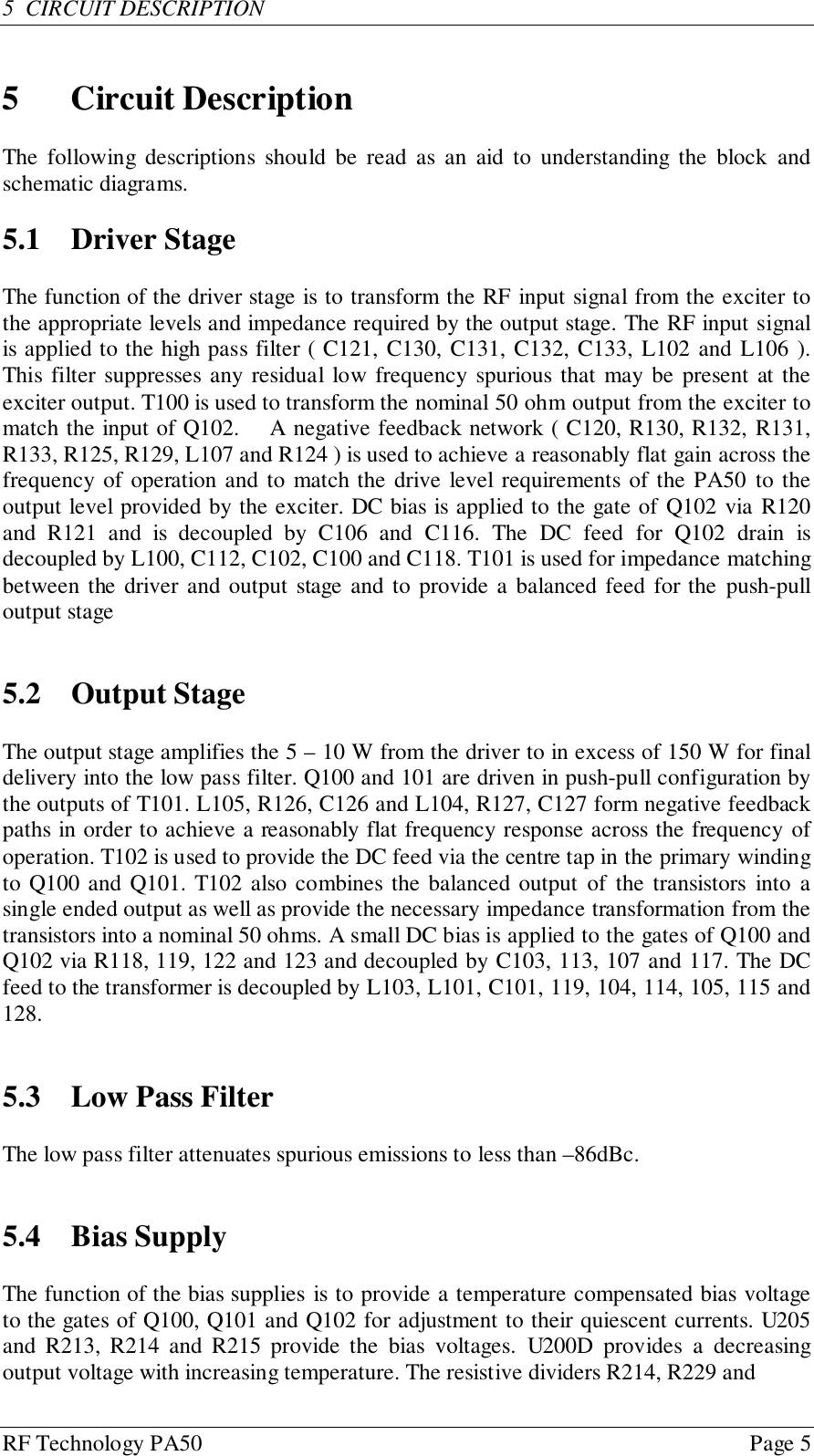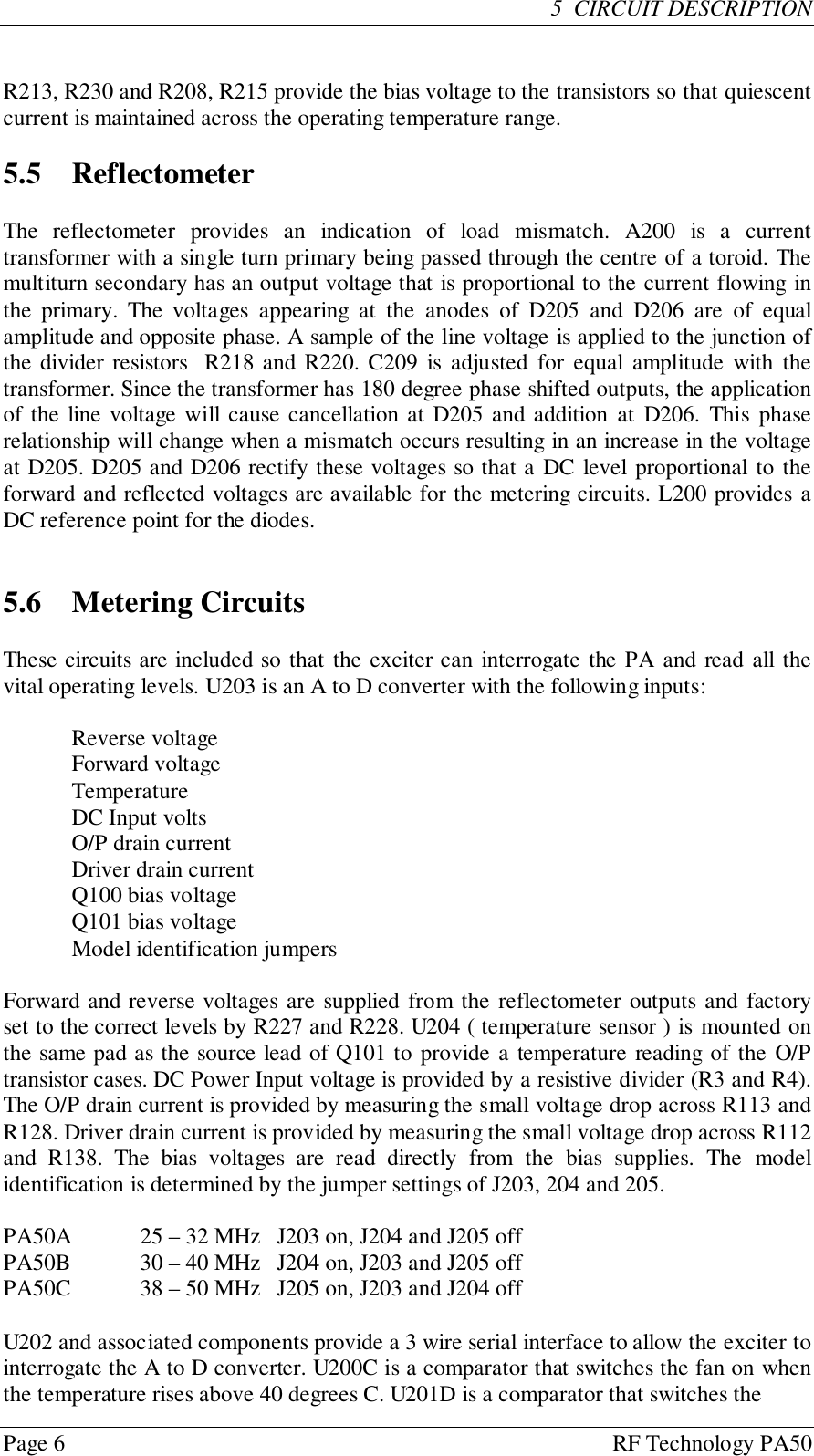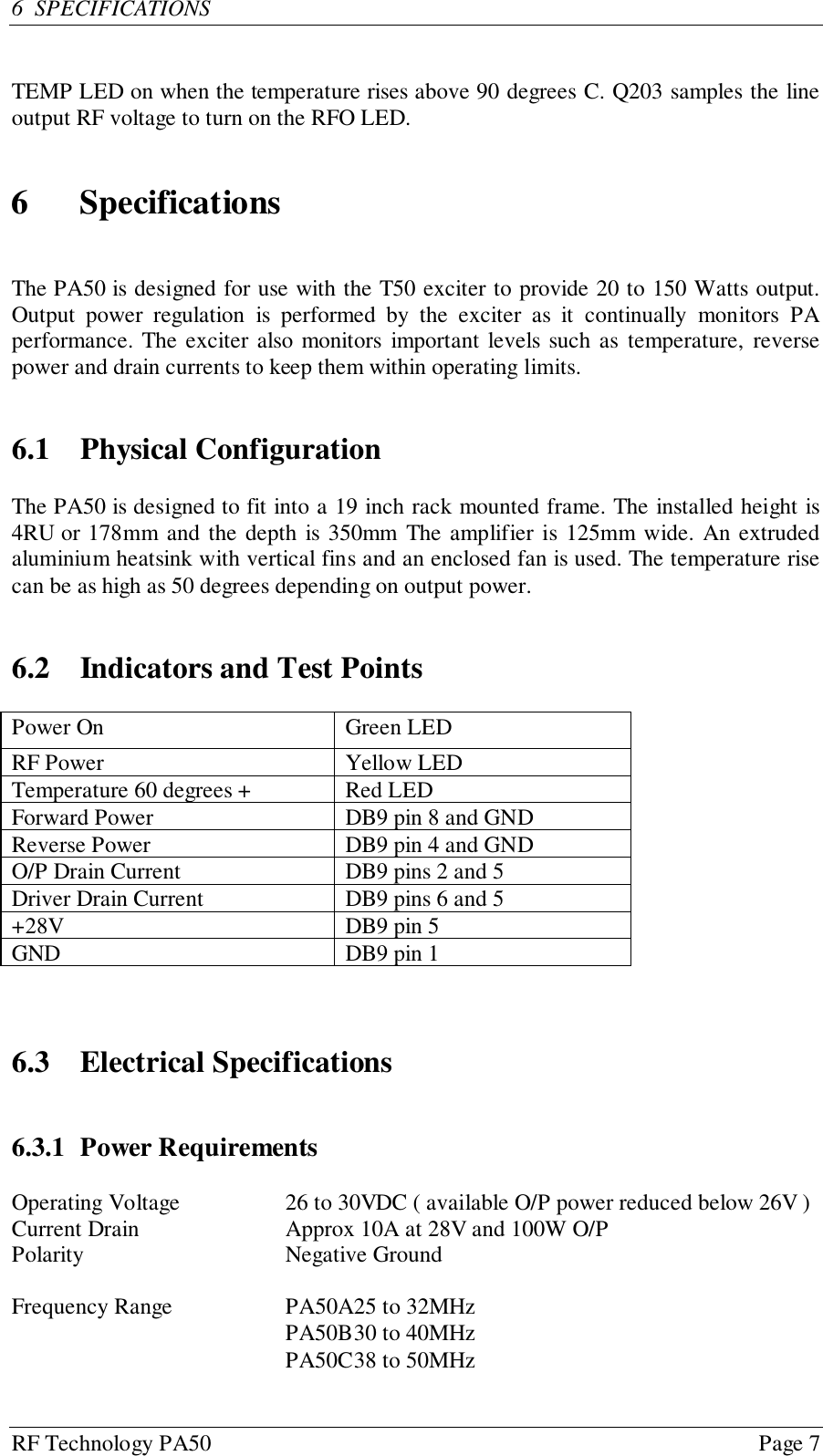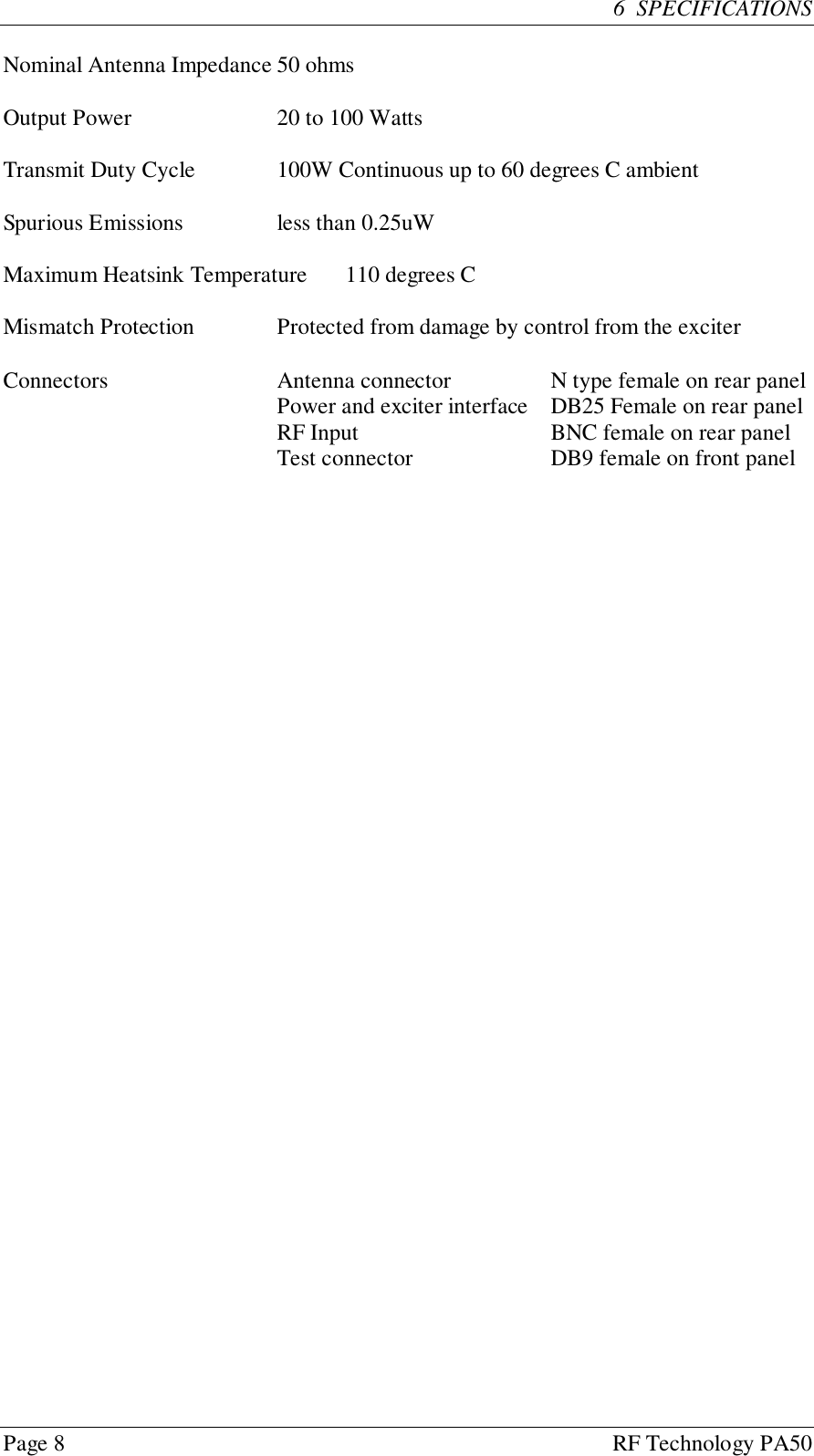RF Technology 50A 25 - 50 MHz Base Station Transceiver User Manual Power amplifier operations manual
RF Technology Pty Ltd 25 - 50 MHz Base Station Transceiver Power amplifier operations manual
Contents
- 1. Receiver operations manual
- 2. Power amplifier operations manual
- 3. Exciter operations manual
Power amplifier operations manual
